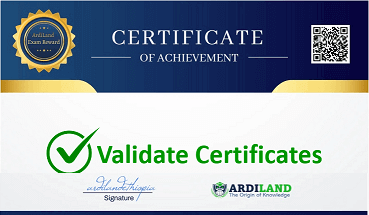What you will learn?
Upon successful completion of the "Exploring Earth's Past: Geology Exit Exam," students will demonstrate a solid understanding of the fundamental concepts, principles, and applications of geology.
They will be able to analyze and interpret Earth's geological processes, structures, and history, and demonstrate proficiency in applying geologic knowledge to real-world scenarios.
This exam will provide students with a comprehensive assessment of their geology knowledge, preparing them for further studies and future career opportunities in the field of geology.
About this course
The Geology Exit Exam Practice Exam is designed to help geology students prepare for their final exit exam. This practice exam provides a simulated testing environment where you can assess your knowledge and understanding of various geology concepts, principles, and processes. The exam covers topics such as mineralogy, petrology, stratigraphy, plate tectonics, and geological mapping. By taking this practice exam, you can evaluate your preparedness, identify areas that require further study, and build confidence for the actual exit exam.
Requirements
To take the Geology Exit Exam, students must be enrolled in an undergraduate program at a recognized university or college in Ethiopia.
It is recommended that students have successfully completed the required geology courses and have a foundational understanding of basic science principles.
FAQ
Comments (2)

Send me every exit exam for geology or earth science 🔭
Basic concepts and terminology are the foundation of any subject.
The geological time scale is a system for dividing up the history of the Earth into units of time, based on the events and processes that have occurred.
Rocks are classified into three main types: igneous, sedimentary, and metamorphic.
Plate tectonics is the theory that the Earth's lithosphere (the outer layer of the Earth) is broken into a number of plates that are constantly moving.
The Earth is divided into four main layers: the crust, the mantle, the outer core, and the inner core.
Plate boundaries are the locations where tectonic plates meet.
Volcanic processes and types of volcanoes are a complex and fascinating subject.
Here are some basic information about earthquakes and seismic activity:
Weathering and erosion are two processes that work together to break down and transport rocks and minerals from one place to another.
Here are some information about sedimentary rocks and fossilization.
Here are some examples of glacial and periglacial landforms:
Here are some examples of fluvial and coastal landforms:
Here are some of the principles of stratigraphy:
Here are some information about geologic time and dating methods:
The evolution of life on Earth is a long and complex process that has been going on for billions of years.
Here are some information about mass extinctions and fossil records:
Here are some information about minerals and mining:
Here are some information about energy resources:
Here are some information about groundwater and aquifer systems:
Here are some environmental impacts and conservation efforts:
Here are some information about landslides and mass movements:
Here are some information about tsunamis and coastal hazards:
Here are some information about earthquake hazards and seismic waves:
Here are some information about volcanic eruptions and lahars:
Here are some information about engineering geology and geotechnical investigations:
Here are some information about hydrogeology and water resources management:
Here are some information about geological mapping and remote sensing:
Here are some information about environmental geology and climate change:



.png)






Send me every exit exam for geology or earth science 🔭